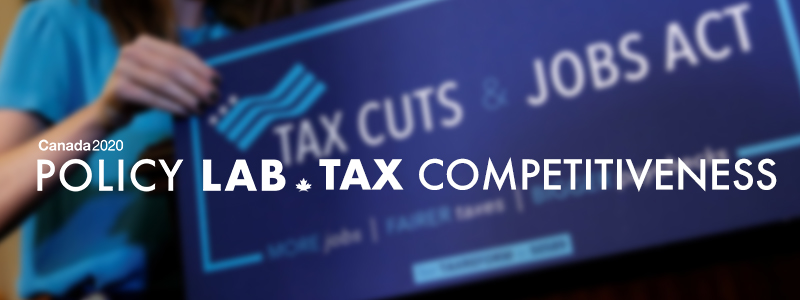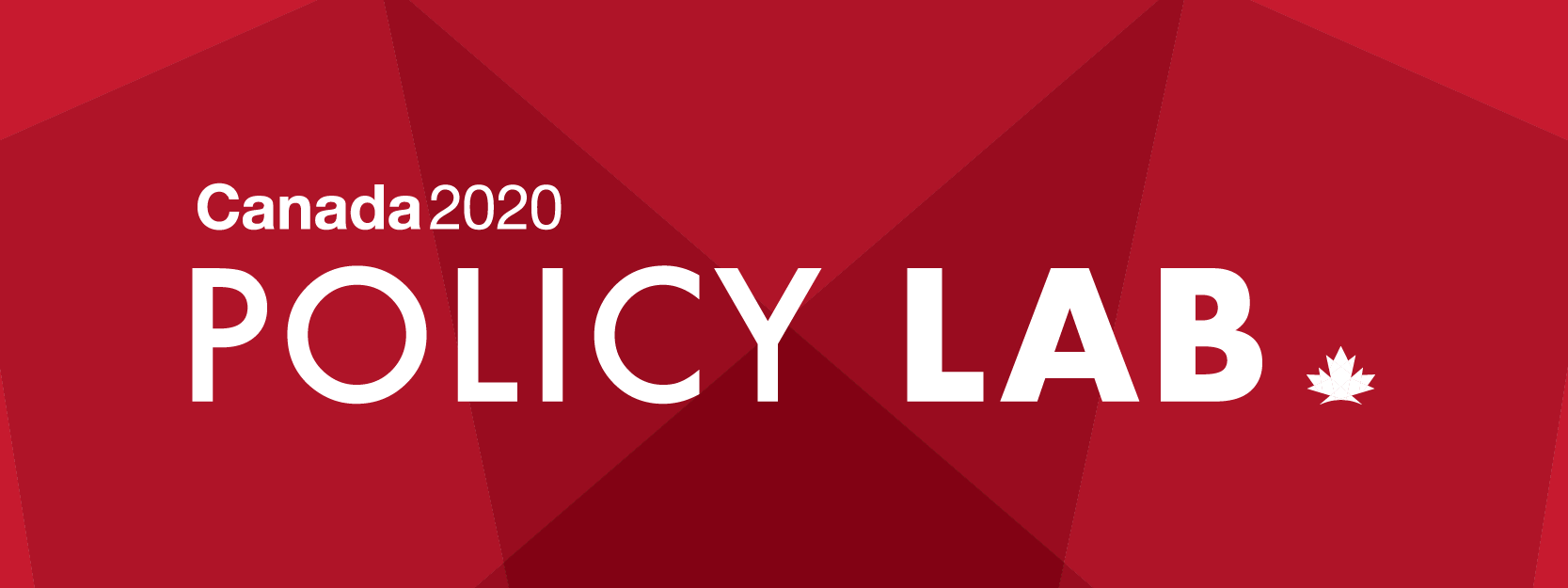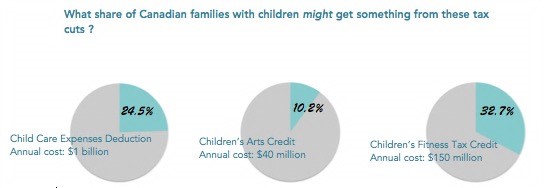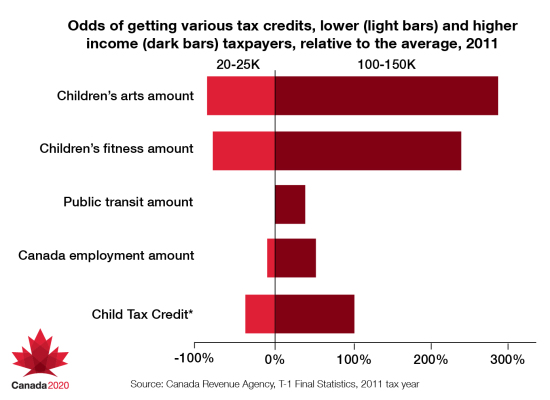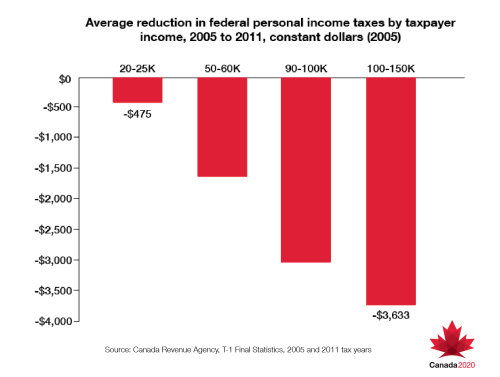Remarks from Michael Wernick to the Canada 2020 4th Annual Indigenous Economic Development Forum
November 27, 2019 (The Westin Ottawa)
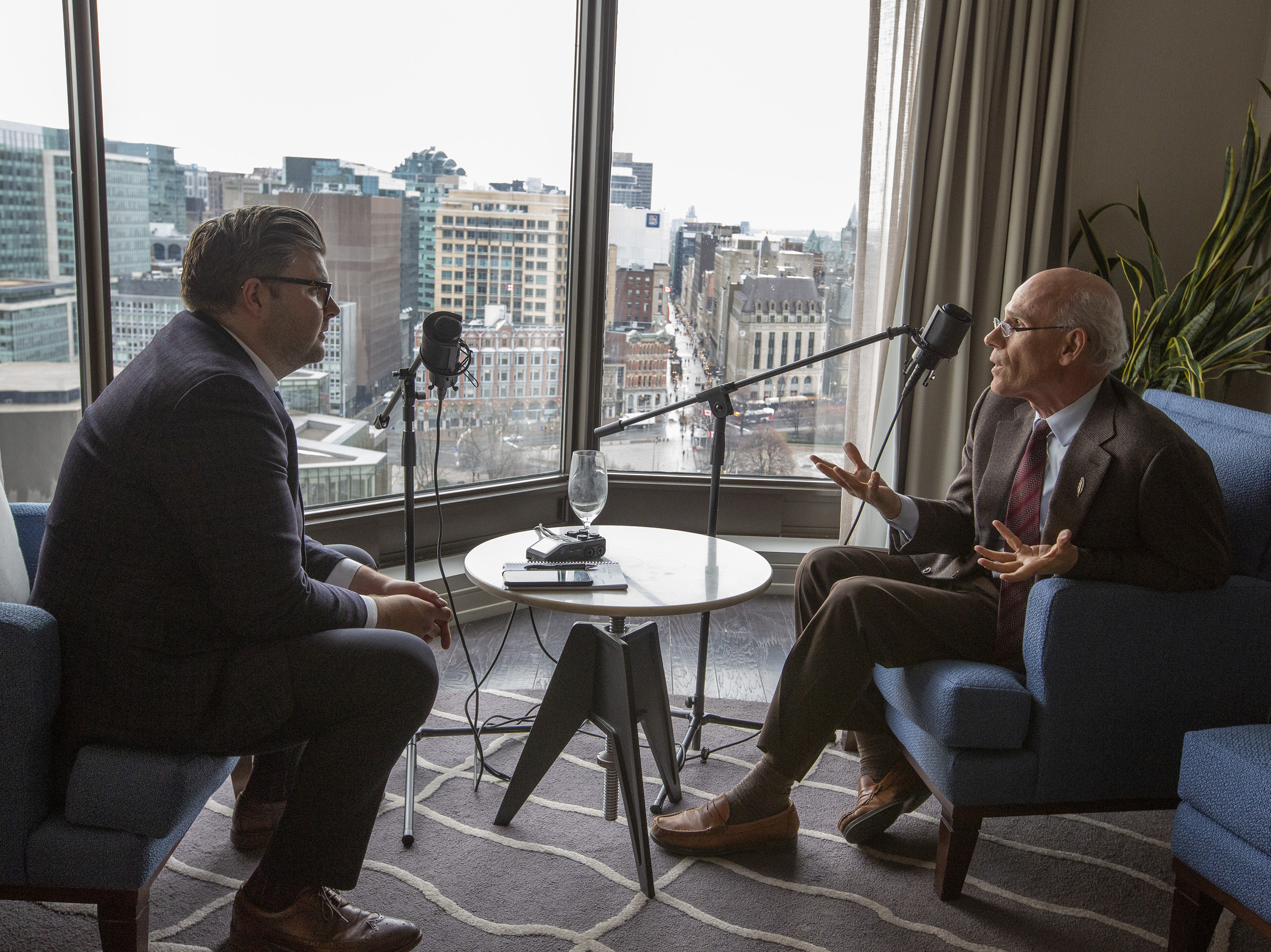
Kwe Kwe, Tan’si, Ullakuut, Bouzhou, Bonjour and Good Morning.
Let me also begin by acknowledging that we are gathered on the traditional territories of the Algonquin peoples of this part of Turtle Island, and by thanking Elder Venra who helped us get today’s gathering started in the right way.
I also want to thank Canada 2020 for the invitation to join today’s dialogue, and acknowledge the many wonderful speakers and panellists gathered here today, many of whom I have had the honour to meet along the path I have taken.
The diversity of Canada’s Indigenous peoples, their history and their present realities, is such that it is rare that any statement holds true for all. Rather it is weaving or braiding those diverse experiences and realities together that brings us closer to finding common ground and a way forward. That is the great service Canada 2020 is providing to us today.
All I can offer in the next few minutes is to share, with great humility, some reflections from my own journey, suggest where that common ground may be found, and propose a menu of specific actions that could be taken. My contention is that we have an opportunity right now for a non-partisan agenda that would make a tangible difference.
My own journey with Indigenous issues began in 1985, as the desk officer at the Department of Finance for Indian and Northern Affairs, and for the next 34 years I returned many times to the path of Indigenous issues, always as a servant of the Crown, always in the executive branch of the federal government. Half of my career I worked for red governments and half of it for blue.
Pulling together the biography you have in front of you, that traces my journey it jumped off the page that along the way there were some big setbacks, when exciting breakthroughs stumbled and collapsed at the last step, disappointing not just the government of the day – but also the Indigenous leaders who had taken great risk to work collaboratively rather than sit back and reject.
The 1987 Constitutional Conference chaired by PM Mulroney, the Charlottetown Accord, the Royal Commission on Aboriginal Peoples and the Gathering Strength response, the Kelowna Accord, the First Nations Education Act, the First Nations Governance Act. These events have reinforced a view I often heard, and still do, in some circles of punditry and politics that Indigenous issues are intractable, and that the career of every Minister and every National Chief will ultimately end badly.
I reject that view. Along the way there have also been important breakthroughs. The entrenchment of constitutional protections in sections 25 and 35 of our Constitution just one generation ago (I was in the crowd on the Hill that rainy day in April) has changed the power balance and opened up a path that runs not through legislatures but through the courts. More than 20 Supreme Court rulings have established a body of law and principles such as Honour of the Crown, duty to consult, duty to diligently implement, and concepts of Aboriginal title and Metis rights that have real impact. The law has created leverage and opportunity for Indigenous peoples here in Canada that no other Indigenous peoples in settler countries have achieved.
In particular the 26 modern treaties addressing land claims or self government or both have given communities and people meaningful tools to regain a degree of sovereignty and build a better future.
I especially want to lift up the Inuit leaders, past and present, who have built something unique in the world over the past 20 years, and the Yukon First Nations who left the Indian Act and achieved self government a generation ago.
These agreements, as well as dozens of litigation settlements, were in part intended to address some of the most egregious wounds created by our troubled history, which was a key recommendation of the Royal Commission in 1996. In some ways they can never be enough, but by acknowledging and facing up to the past they have allowed at least some healing and freed up energy and effort toward shaping the future. Among them I would note the residential schools settlement and more recent settlements related to childhood experiences, the apologies for forced relocations, the settlements of the Lubicon and Bigstone Cree claims, the creation of the Qalipu First Nation, the Paix des Braves in Quebec.
This is not to overlook the flaws and imperfections in how many of these initiatives have been implemented, or to deny that there is so, so much more left to do.
I do contend they illustrate that with good will, mutual respect and courage, common ground can be found and progress achieved – but also that the quest for the perfect and pure can be the enemy of the good and may needlessly prolong misery.
Each success creates hope and momentum, and concrete lessons that can carry forward to new successes. Emulating and spreading success stories is often the most effective approach to creating positive change in the world.
Our history tells us that there is no reason for Indigenous issues to be caught up in divisive party partisanship. Each of the eight Prime Ministers and ten Ministers I have served – yes I started and ended with a Trudeau – has in his or her own way attempted with personal commitment and at some political cost to tackle the profound challenges of what we now call reconciliation and each has seen achievements and setbacks along the way. I can also say have seen the best and the worst from provincial governments of all stripes, red, blue and orange.
So my assertion is that there is ample room right now for a non-partisan or multi-partisan agenda here in Ottawa, and indeed an urgent need for an intergovernmental agenda bringing together all governments in our federation.
Given the high failure rate of grand scale broad spectrum political initiatives like the Charlottetown and Kelowna Accords, and of some of the more targeted structural reforms, it seems to me that the best approach is one of relentless step by step change, working together, and that a good place to start in 2020 is in fact economic reconciliation.
Whether you come from the red, blue or orange camps in national politics, or from the pragmatist or ideologue camps in Indigenous politics, from the public or private sector, no one wants a future of poverty, unemployment and dependency. There are many good practices and ideas we can quickly build on, especially if we speak directly and honestly with each other.
To paraphrase someone I admire who spoke to Canada 2020 earlier this year – there are no blue ideas or red ideas or orange ideas – just ideas, good and bad.
I don’t think it has anything to do with majority or minority government: many of the big initiatives that failed in the past were initiated by majority governments and some important successes were achieved by minority governments.
I do think it has to do with common ground. I can see at least five areas on which to build.
The first point of common ground should be to say more often to each other that there can be no broad progress in any community anywhere on social, health and justice outcomes if there is no economy. People want a degree of personal autonomy, they want jobs and opportunity to build something for themselves and a future for their families, whether it is a career, a home, a retirement nestegg, or a business.
Communities need an economy that will generate revenues to pay for services and that can be monetized to finance infrastructure. The government in self-government means collecting revenues and accounting for their use, not dependency on transfers.
The second point of common ground, conversely, should be that in 2020 economic growth must be sustainable and must be inclusive. Indigenous peoples knew this before the rest of us began to catch on and catch up. We must ensure economic and infrastructure projects in and near Indigenous communities are held to the highest standards of environmental impact and that these communities are leading, not following, the great energy shift under way.
I would add under the social dimension of sustainability that we must be vigilant not to see the historic inequality between indigenous and non-Indigenous Canadians morph into a new form of inequality among Indigenous Canadians.
Third, and this may be contentious for some, we know that economic outcomes are hugely affected by the quality of governance. I am a big fan of the 2012 book Why Nations Fail and the compelling case it makes for inclusive governance. We must chart a course where we do not end up with everyone working for Indigenous governments and their state owned businesses, but nor do we end up with unaccountable oligarchs.
Fourth, the ingredients of activating economic growth and activity are the same for everyone – land and resources, location, access to supply chains and markets, access to start up and patient capital, people and their skills and talents, and a blend of innovation and entrepeneurship. Indigenous economies are not exempt from the principles of economics.
Fifth, there is no single economic growth strategy or toolkit that will work for all Indigenous peoples. We have to be moving on all fronts. There will have to be very specific approaches for Inuit and Metis and we will have to pay much greater attention to the half of Indigenous people who come to study, work and live in non-Indigenous communities but often have profound ties, including voting rights, in their home communities.
The good news is that there is a diversity of opportunity spreading into new sectors and industries – natural resource extraction and processing, ecotourism cultural tourism, cultural creation, clean energy, broadband infrastructure, selling into procurement supply chains, environmental monitoring, air and bus transportation of people, use of drones for surveying or wildlife monitoring, shipping and logistics, introducing airships and hoverbarges to replace failing ice roads, cleaning up orphan wells and contaminated sites, removing old munitions, greening of military bases, building and maintaining housing and community infrastructure, hosting data and server farms in secure locations, selling directly into Amazon and Alibaba.
We know that for many communities despite the opportunities there are all too many obstacles and impediments in the way. Location, scale, lack of capital, lack of skilled labour, lack of reliable infrastructure, lack of broadband – these are still all too common and require focus and effort.
We also know that some key obstacles are created by the unique legal underpinnings of most Indigenous communities. As short as that path would be, and perhaps it is worth a shot, I do not think we will ever see consensus for a simple one page bill that says “the Indian Act, 1951 is repealed, effective five years from Royal Assent”. Because there is not going to be an easy consensus about what will follow, not just in Parliament, but in Indigenous politics. What happens after exit?
Since the big breakthrough in 1982 all of the subsequent constitutional rounds failed. We have only managed two exit strategies to date. One road is the modern treaty. The other is the workarounds that are optional, not mandatory. Many in this room will be familiar with at least one of them (though perhaps by acronym): the First Nations Land Management Act, the First Nations Oil and Gas Act, the First Nations Commercial and Industrial Development Act, the First Nations Fiscal Management Act and its creations the First Nations Tax Commission and the First Nations Financial Authority.
However, If we are candid, most First Nations leaders in fact want to retain three essential legal features of the Indian Act – inalienable communal land, shielding from provincial laws of general application, and exemption from taxation of income earned on reserve.
That is understandable, but it does mean there is no simple version of a successor regime, and it will mean extra work to create winning conditions for economic activity. The good news is that this is quite achievable. I personally think there is a potential third exit strategy – of updating the historic treaties with new constitutionally protected side agreements and implementation agreements – but that is a big topic for another conference another day.
My own view has long been that the way to get rid of the Indian Act is the Jenga strategy – you know the game where you have a pile of logs and you pull one out, the another, then another until eventually the structure just collapses. If we pull more communities out one by one by concluding modern treaties and increasing take up of tools like the First Nations Land Management Act, and if we pull out just a few more pieces of the Indian Act regime, we get closer to the day when it comes crashing down. Perhaps we are closer than we know.
So I want to close by putting forward some very specific initiatives, that would move us forward. My focus is on creating economic activity, and I am setting aside for now some other important aspects of our broader reconciliation journey. I speak for no-one but myself. Here are twelve specific things we can do.
- to Premiers Kenney, Moe and Pallister – uncertainty about Aboriginal title is pulling back economic growth in your provinces. So let’s clarify who owns what across the West and let’s expand the Indigenous land base to its rightful dimensions. Premier Kenney gave a really important speech to the Peter Lougheed dinner last week and spoke of a can-do, get it done Western sprit. So, why not work with your two colleagues and sign a pledge right now to complete, within the next five years, the Treaty Land Entitlements that were promised more than a century ago. To paraphrase the late Gord Downie – we are behind by a century. Your governments control most of the Crown Land. and you own the natural resources. Don’t hide behind the federal government.
- to the same three Prairie Premiers I would also say – it is time to stop kicking the can down the road of Metis claims and hiding behind the courts. The Metis have been here a long time, they are recognized in the Constitution, and they aren’t going anywhere. Let’s start by convening a Summit in 2020 bringing together the three Premiers, the Prime Minister and the Metis Nation and then keep at it.
- to all Premiers – you jealously guard jurisdiction over securities markets and incorporation – so you could make it a filing requirement that a company above a certain size can’t be listed on the stock exchange, unless it has published publicly its plan for economic reconciliation with Indigenous peoples and updates it every year.
- to both the federal and provincial governments who procure billions of dollars of goods and services – the tools you now use for Indigenous participation sound good but in practice they are puny and underpowered – table scraps for small business – it is time to take the more successful American models used there since the 1970s, and put in place much more robust and ambitious procurement levers. They should look more like the best in class benefit agreements with a focus on real reportable and binding commitments to training and employment of young people.
- how about closing the next First Ministers Conference by signing a pledge to work together and get every single Indigenous community on good quality broadband within five years. And not just one computer in the band office or school – real connection for students in their own homes and for businesses to join the world of digital commerce.
- to the federal government, commit that within five years you will turn over all the funds collected as “Indian Moneys” to First Nations Governments or trust funds run by First Nations. Pass a one page bill now to repeal the Indian Moneys sections of the Indian Act five years from Royal Assent. That will create some urgency and inject several hundred million dollars of working capital and pull one more log out of the tower. Google Allan Clarke’s paper in Policy Options on this one, or go and see him. He is here today.
- Bear with me, but in practice there is an impediment to securing insurance and financing, a deterrent to investment, and a source of disputes about cleanup because of perceived legal uncertainty about who owns the infrastructure grids, buildings and houses on reserves – the band or the Government of Canada. The only people who benefit from this confusion are lawyers. Find a passing bill, and tack on a short amending provision that says something like “unless set out elsewhere, community buildings and infrastructure are the property of the band government”.
- Not all businesses behave well and there is a need for consequences. There is a lack of teeth in the ability of First Nations governments to enforce their own laws because the maximum fines they can levy are far too small – just 1000 dollars for many matters. That could easily be amended with a few short lines to up to 10 or perhaps 50 or something like 100 thousand for environmental offences.
- All governments know how important good infrastructure is to economic growth. It is often a centrepiece of their economic gameplans. One of the biggest obstacles to catching up on badly needed infrastructure is that both Indigenous governments and my old department usually work on a pay-as-you-go, all cash, basis with very little use of other financing tools. The federal government could spin off a new Crown Corporation by 2021 – a First Nations Infrastructure Corporation – modelled on the one in BC, one that has the entire toolkit to tap into financial and capital markets, a board with a First Nations majority, and a relentless focus on building things. If we can’t get political buy in for a national one, then set up some regional ones and build experience. At the same time let’s rapidly scale up the use of the First Nations Finance Authority, which has proven it works.
- there is a great opportunity for Indigenous entrepreneurs to grow big scale businesses that operate and maintain buildings for others – whether they are housing or community facilities. Because these buildings wear out roughly twice as fast on reserve as off reserve it takes twice as much money to maintain the stock. We need a few First Nations owned companies modelled on Brookfield to take the risk and administrative load off small band governments, extend asset life and improve environmental performance.
- to First Nations leaders I would say there are two thorny problems that impede economic development that the Government of Canada cannot tackle – you are the only ones who can. It will take time and require a lot of political courage. One is overlapping assertions of Aboriginal title, which is pretty much all of them. These are familiar in British Columbia, where I think we have to admit after thirty years of well meaning effort that the BC Treaty Commission has essentially failed to find a way to deal with overlapping claims. Every time a modern treaty was reached it was litigated by the neighbours, in front of Canadian courts. We need a dispute resolution panel based on international relations practice that will arbitrate overlapping assertions or mediate co-management and sharing agreements. The AFN could take the lead in consulting and designing such a panel and make a proposal by June of 2021.
- The other is land tenure and land allocation within reserves. This is a subject no one wants to talk about. Back in 1951 the Government of the day tried to increase security of tenure for individuals without breaking the common property model and moving to the fee simple model. In many parts of the country people began to use certificates of possession, while in others there are various forms of custom allocation. The result sixty eight years later is all too often a mess, and one that not only holds back economic development but will over time create growing division and inequality within communities. No federal government is ever going to grasp this nettle. The AFN should set up its own Land Reform Commission and make a proposal by 2022 on how to update the land tenure legislation that underpins all those communities yet to achieve full self government, starting with an overhaul of the certificate of possession regime.
And of course, there are many more pragmatic things that can be done to address access to capital, to build a skilled workforce and to grow more entrepreneurs and business leaders. I can’t touch on them all. You have sone very qualified people coming up later in this conference.
I am quite sure some people may not like some or indeed any of my proposals. Fair enough. Make your own. I know from experience some people will argue I am just making a more comfortable Indian Act and we should wait for a bigger reform – but I would say after nearly seventy years it is time to fix what can be fixed and move on from there.
What I really hope you will take away is a message of optimism and a greater sense of ambition. That there is ample common ground for an agenda of economic reconciliation. That there is no reason for it to be derailed by partisan politics or minority Parliaments.
After 34 years on this road, my core belief is that what we call Indigenous Issues can and will yield to good policy, good governance, and good administration. Relentless pragmatic changes, one step at a time. will take us further along the path to a much brighter future.
People have earned the right to a sense of scepticism. Trust can be difficult to build and is quick to crumble. But pessimism and defeatism It is not what Canada is all about. Not in 2020. Not ever.
Thank you. Merci, Nakurmik. Meegweetch.

